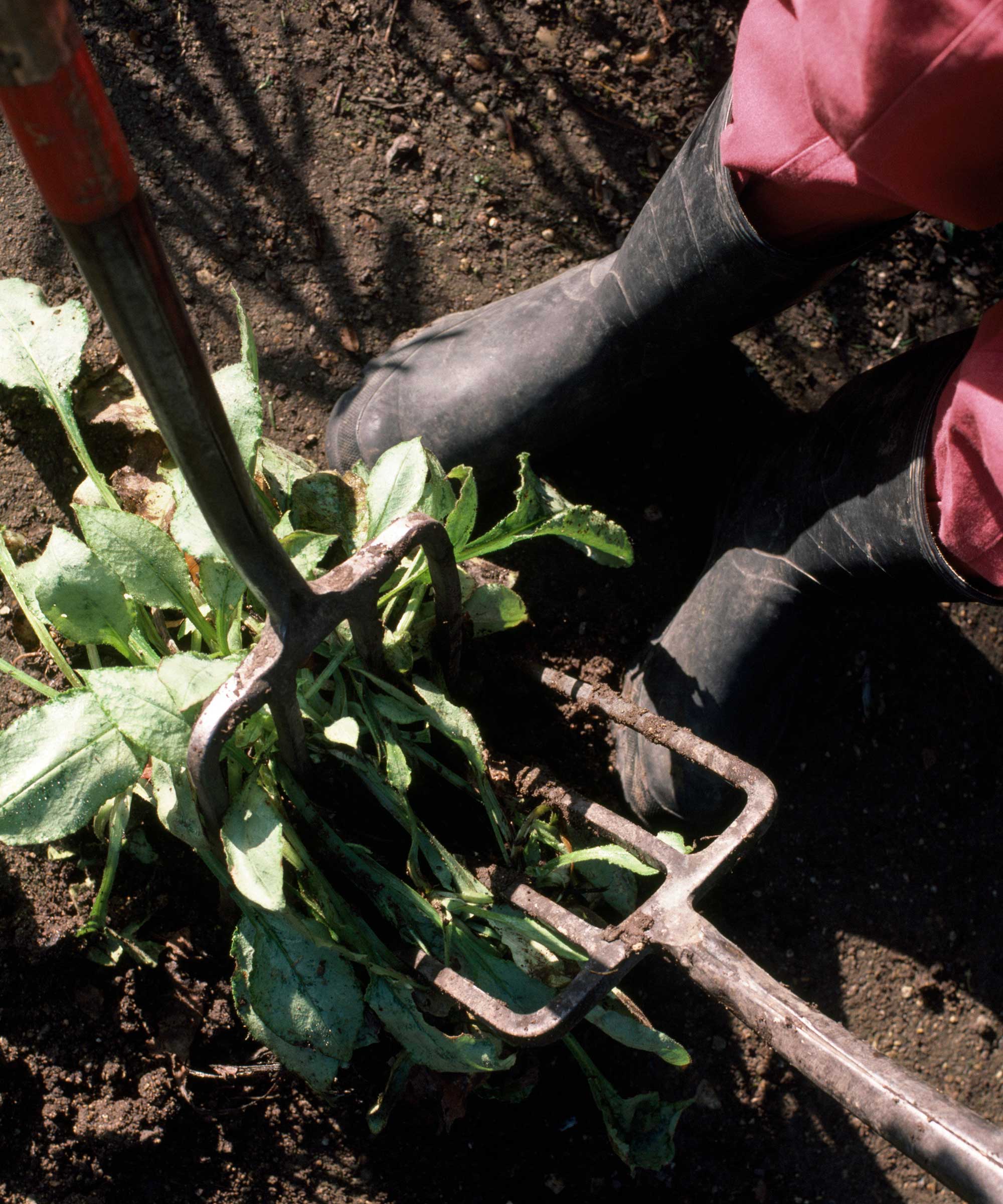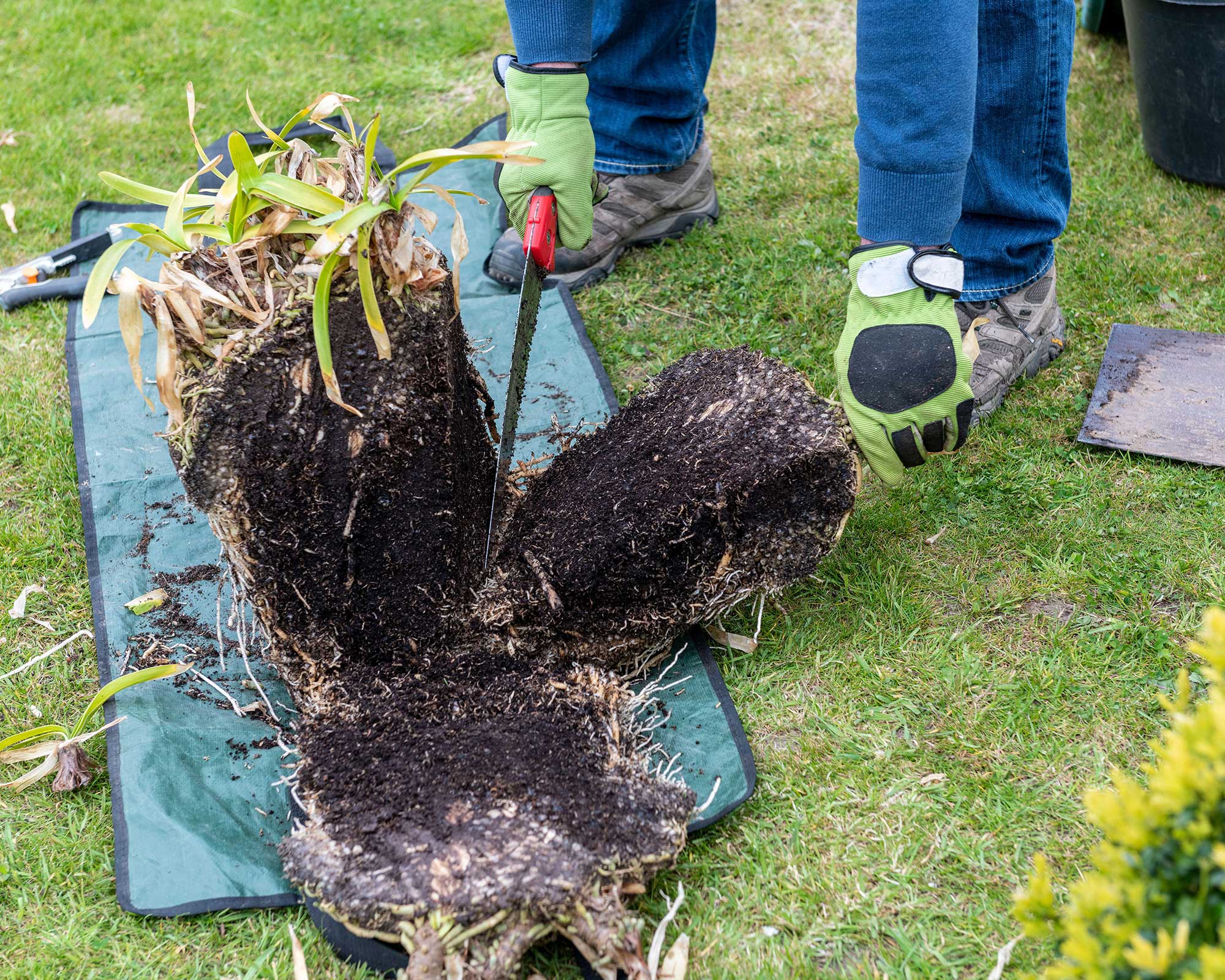Dividing perennials: when and how to do it for healthy new plants
With our tips on dividing perennials, you can fill your garden with more plants for free


Dividing perennials may sound technical, but really, it's a simple job. And once you've got the lowdown on how to do it and tried it in your own garden, you'll be rewarded with plenty of benefits.
All kinds of clump-forming herbaceous perennials can be divided, from agapanthus with its bold blue blooms to salvias and ornamental grasses. So, if you're already tending to flower beds in your outdoor space, these tips are sure to come in handy – not just to improve the health of existing plants but also to get lots of new plants for free. It's a win-win in our books, particularly if you're on the lookout for cheap garden ideas.

What are the benefits of dividing perennials?
There are a few reasons why dividing perennials is beneficial. Firstly, it prevents plants from becoming overly congested, so it helps maintain their health and vigor.
Secondly, splitting up your plants will give you new, free plants to boost your garden display – just like taking cuttings from plants.
And thirdly, sometimes, perennial plants simply get too big for the space they are in. They can begin to dominate flower beds, which can be detrimental to other, nearby plants. Dividing them up is a way of controlling their size.

When is the best time for dividing perennials?
Overall, plants can be divided at almost any time of the year, as long as you keep them well-watered afterward, says the RHS. However, it tends to be most successful when plants are not actively growing, they add.
For instance, it is best to wait for hostas' leaves to turn yellow and die back before you divide them, explains the Amateur Gardening team. This tends to be in mid-autumn. Do it earlier, when the leaves are still green, and you will stress the plant.
Crucially, when dividing any type of perennial, the soil must not be waterlogged or frozen. 'In general, autumn is the best time because growth has slowed down, the soil is moist and still warm from summer, and the roots will have time to re-establish themselves before top growth resumes in spring,' says John Negus, an expert from Amateur Gardening. However, spring can be a more suitable time to divide perennials that are on the tender side, says the RHS.

Dividing perennials in 4 easy steps
Ruth Hayes of Amateur Gardening shares her top tips for dividing perennials in four easy-to-follow steps:
- Lift your plant from the soil by digging widely around it and keeping as much soil around the roots as possible.
- Split it into sections using the blade of your best garden spade or, if the roots are a thick mat, a knife or saw. You can also place two garden forks back-to-back among the roots and divide the plant by pulling them apart. Make sure all the divisions have healthy top growth and roots.
- Plant the new sections in nutrient-rich soil, at the same depth that they were planted originally. It's important to keep watering plants as well as ensuring they are weed-free while they get established.
- Don't be alarmed if your divided perennials droop for a day or so after planting. This is a common occurrence and they will soon revive.
Of course, you don't have to move your new plant sections into borders. You can also pot them up into containers filled with potting compost and topped with mulch – such as slate chippings – to retain moisture.
You can then grow them on, keeping them somewhere frost-free over winter. Plant them out at a later date, or move them into a larger pot for a patio container garden display.

How often should you divide perennials?
According to the RHS, most perennials will benefit from being divided every two to three years in terms of helping them stay healthy. Most plants can be divided more regularly, however, if you want 'new' plants sooner.

The garden was always a big part of Holly's life growing up, as was the surrounding New Forest where she lived. Her appreciation for the great outdoors has only grown since then. She's been an allotment keeper, a professional gardener, and a botanical illustrator – plants are her passion.
